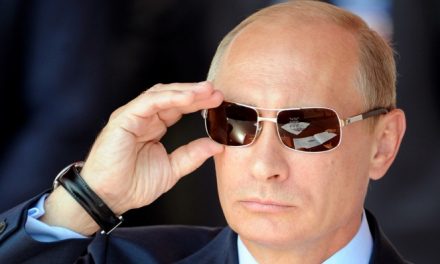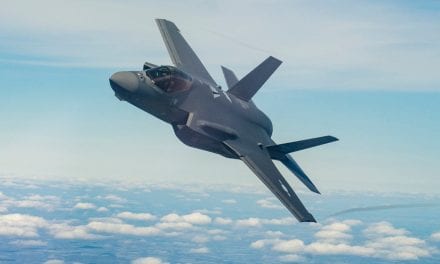By Shehab Al-Makahleh, al arabiya
The international political and diplomatic scene is witnessing an escalation in political and military tensions between the US and Russia as well as their allies, which have reached a state of bellum omnium contra omnes (the war of all against all) in Syria.
Since the end of the Second World War, the world has been witnessing a struggle for power between the two largest powers, the United States and the former Soviet Union, the current Russian Federation, which has regained its strength by re-establishing itself if not a super power, a regional power from Europe to the Pacific and from Africa to Asia.
The past two years have witnessed a major escalation in many areas such as the Balkans and Ukraine. Competition for influence between the two countries has been apparent in the Middle East conflict, which has been in turmoil since 2011.
ALSO READ: Russia establishing permanent presence at its Syria bases
The main goal of Russia’s attempt to increase its influence in the Middle East is to restore its great interests in the region, which it used to have during the Cold War period and to distance the United States from its areas of influence in the Mediterranean, especially Syria.
The United States of America’s goal is to maintain and develop its strong economic relations with many countries in the Middle East, such as the Gulf States and Jordan and Iraq. The United States has billions of dollars in mutual investment with these countries, in addition to strategic military bases and political influence.
All these facts explain the renewed conflict in the Middle East between the two countries as an important economic and political strategic area for both countries.
The Middle East has historically been one of the great ambitions of the big powers as the region is a key area of influence
Shehab Al-Makahleh
Russia’s progress?
Russia’s dominance since 1991 has been vivid. When Moscow entered the war in 2015 to support the Syrian regime, Russia has been actively seek¬ing a new order shaped in its own image. For example, in Libya, Turkey, Yemen, Syria, Iraq, North Africa, the GCC and Iran, Russia is seeking benefits strategically.
As Russian foreign policy is increasingly active in the Middle East and is linked to Moscow’s specific strategic interests, it appears that a governing framework for this policy is almost a political project or a “political vision” for Russia that frames its policy towards the region. This perspective encounters many challenges related to the positions of the major powers in the Middle East.
The Middle East has a long history of interaction with the United States, with its pros and cons. If there is an American “project” for the region, its dimensions have been raised in multiple contexts, both in the context of the “conspiracy” theory, Trends that deal with Washington as dominant in the region’s interactions.
Russia was able to move the Middle East conflict to a completely different stage by announcing its direct military intervention in Syria in 2015 to stand by the Syrian regime, its first direct intervention in the Middle East since the October 1973 war, to protect its only military base in the region.
This intervention continued through Russia’s testing of many military equipment in Syria, including the most recent military tanks. Russians managed to sell many of them to countries in the Middle East. The state of inter arma enim silent leges (in times of war, the law falls silent) of both the US and Russia have unleashed their hands in the Middle East, which have resulted in a death toll in the 2017 of more than 500,000 people.
The Russian expansion in the Middle East continued by dealing with negligence with Turkey, which is one of the most important American allies in the region. Turkey is opening the gate wide open for Moscow to intervene and to develop relations with Ankara.
The Russia-Turkey relationship, which was severely strained after the Russian plane was brought down in Syria in 2015, returned to normal after the two countries found a common interest in coordination on the Syrian conflict to achieve their own objectives without giving any consideration to the United States.
Russia’s transformation
Thus, Russia’s transformation into a state that competes against American influence in the region faces several challenges which include:
The first challenge is the position of the countries of the region in relations with Russia, which vary based on interests of each.
However, they do not yet adopt policies that deal with Russia as an alternative to the US and thus prefer balance in their relations with Washington and Moscow by adopting strict positions on regional issues, leading to a clear bias toward Russian or American policies, which limits any expansion of Russian activity in the region.
The second challenge is the unpopularity of Russian perceptions of “color revolutions” between the “ruling elites in revolutionary countries” and the forces of the street, especially as these elites were supported by the forces of the street, whose importance is growing in the Middle East.
The third challenge concerns the extent to which Russia’s influence in the region will have a significant impact on the regional roles of the region.
If the United States were to implement its policies in the region in 2011, Qatar, Turkey and the Muslim Brotherhood, Russia will seek to enable certain actors to play more active roles in the region and those which are consistent with its policies, such as Iran, without paying attention to the perceptions of the Gulf states, especially Saudi Arabia, concerning Iran and its regional role.
Russia knows that the US seeks to allow it to expand in the world in order to reach a point where it cannot control its area of influence before targeting the plains of Central Europe close to Russia to Siberia, the Mediterranean countries and South Asia as well as Eurasia where Russia has heavy presence. If the US dominates any of these areas, the Russian Federation would be at risk and the Russian bear would weaken.
The slow motion US policy
All the great advances that Russia made in the Middle East, both politically and militarily, were met with a very negative and slow response from the Obama administration. The US administration seemed surprised by Russian moves and showed no response except to announce its intention to intervene militarily in Syria in 2014, a proposal quickly retreated from exposing itself to strong criticism.
These slow and hesitant responses encouraged the Russian government to continue to strengthen its influence in the Middle East, especially in the run-up to the US elections and the arrival of a new administration to the White House.
The new administration, headed by Donald Trump, is often more vibrant with regard to the Middle East, in a purely economic sense, especially because of his business background. His new policy will be driven mostly by capital investments in the US.
Donald Trump and his administration have to be more responsive and quick to deal with the great Russian expansion in the Middle East, try to restore strong ties with countries such as Turkey as well as protect their strong ties with the Gulf states including Qatar.
Otherwise, the US may experience an unprecedented decline in its influence in the Middle East conflict. The Middle East has historically been one of the great ambitions of the big powers as the region is a key area of influence.
Thus, Syria has become a real battlefield between the US, the most powerful country in the region, and its allies on one side and Russia and its allies on the other. The Russian bear has relatively succeeded in dissolving the pro-American bloc, especially in the light of the new alliances that are taking shape in the region.
_________________________
Shehab Al-Makahleh is Director of Geostrategic Media Center, senior media and political analyst in the Middle East, adviser to many international consultancies.



















